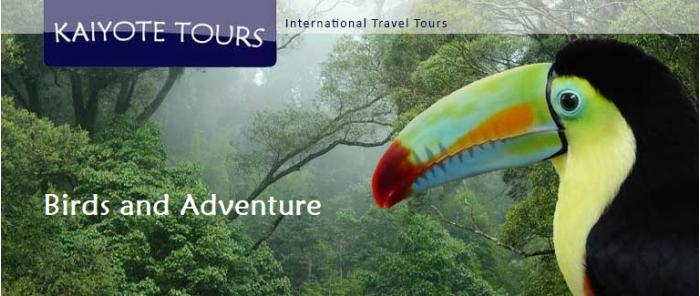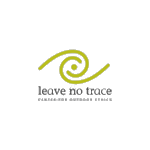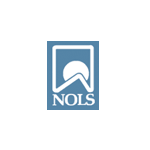Birding Gamboa and Pipeline Road Tours

The 11-day Gamboa and Pipeline Road Tour, including Cerro Azul and Colon
Has it been a few years since you've traveled? Many people are still hesitant to travel outside the country. Our 10-day Gamboa trip is perfect if you just need to get your feet wet to remember how much fun it is to travel. The Gamboa tour stays close to Panama City and the Panama Canal, which are both highly developed and modern areas, but also located at the edge of Soberanía National Park, which contains 55,000 acres of pristine forest full of wildlife and birds (525 different species of birds). Panama is a country which you will want to visit more than once.
After you see the Gamboa area, you will want to return to see the Darien Wilderness and the Chiriquí Cloud Forest.
Gamboa Printable Bird List
(This is the list of the birds that we have seen in the Gamboa, Panama City, and Cerro Azul areas)
Click here: Panama Bird List for a list of all the birds we have seen over the many years of touring in Panama
Animals we have seen in Panama: Five species of monkeys (Golden-mantled Howler, Geoffroy's Tamarin, Panamanian Night Monkey, Spider Monkey, and White-faced capuchin), Anteaters (Northern Tamandua and Giant Anteater), both 2-toed and 3-toed sloths, Coati, Crab-eating Raccoon, Agouti, Opossums (both Panama slender opossum and Derby's woolly opossum), Rufous soft-furred spiny-rat, Red-tailed squirrel, Variegated squirrel, and Capybara; many of the mammals will have babies. We see many reptiles and amphibians including the Spectacled Caiman, American Crocodile and the Common Basilisk (aka Jesus Christ lizard).
You can view photos from someone who was on a previous trip. This is a great example of the trip you will experience if you visit both the Darien and Gamboa. Please click here: Ersten Imaoka's Photo Album
- Travel Dates
- 2025:
- **October 30 - November 9, 2025, spots left = 4
- November 30 – December 10, 2025, spots left = 0
- 2026:
- **October 25 - November 4, 2026, spots left = 6
- Additional Dates: Tours by Request. Any time of year is good to visit the Gamboa and Panama Canal areas. In the rainy season, the rain does not effect the birding because the rain in this area is intermittent, and it is beautiful. Rain in the rainforest makes everything very green. It does not rain everyday, and when it does rain, it only rains for part of the day, and we are still able to go birding.
- Group Size: 6 travelers, plus guides
- Price: $3,650 per person double occupancy, ($900 extra for single occupancy)
- Trip Length: 11 days
- Rates include: Domestic transfers, lodging, breakfast, lunch, dinner, scheduled group tours, park entrance fees and basic travel insurance.
- Not included: International airfare, customs & immigration fees and visas, alcohol, trip cancellation insurance.
- Adventure level: Easy for Gamboa, please check the “Welcome” page for definition
- Reservations: To reserve a spot on the trip, a non-refundable $800 per person deposit is required, and the non-refundable balance is due six months prior to the trip.
**The October/November tour will focus on raptor migration. The itinerary is slightly different than what is posted below. Please contact us for details. Here is short summary: Days 2 - 4, will not be at the Radisson, but at the Best Western Panama Zen Hotel for those three nights. This hotel has a 15th floor bar/restaurant and small infinity pool. This amazing look-out faces in the direction of the Ancon Hill Hawkwatch station. We will participate at the Ancon Hawkwatch station for two half day visits, and we will also do some migration watching from the 15th floor of our hotel. On October 30, 2023, we had planned to go to the Ancon Hill Hawkwatch station, which is a 10-minute drive (or perhaps a 3-minute flight), but prior to leaving, we decided to make a quick check from the 15th floor, what we saw was spectacular. The raptors were already on the move, and we spent the whole day there and watched as 68,087 birds migrated and passed by. The bird count for the day was from Ancon Hill and this was the highest daily count for fall of 2023. Don't miss a chance to be a part of the fall raptor migration in Panama. Next to the Zen hotel is a small park called Andrés Bello Park. Our Zen Bird List for both the hotel 15th floor and at the park is up to 76 species.
Check out our local guides by clicking here: Nando and Ismael (opens a new page), scroll down to the bottom of the page
Private Trips: We are increasingly taking people on private trips. If a group trip does not interest you, please contact us about a private tour and the dates you prefer.
Extended Tours: If you are interested in a longer trip, many of our tours can be joined back to back. For example, you can sign up for the Gamboa tour and also the Chiriquí or the Darien tour for a 2 - 3 week trip.
Special offer: Included with your trip (one per room) is a copy of the field guide “The Birds of Panama” by George Angehr and Robert Dean. You will receive this when you reserve your trip so you will have time to study and know the beautiful birds of Panama.
**Pearl Islands: About 30 miles off the coast from Panama City is the island archipelago called the Pearl Islands, which includes over 200 islands. If you sign up for two tours, back to back, you will have a free day in between the tours. We can help you schedule activities for that day. We recommend a visit to one of the Pearl Islands. It is a 1-hour boat ride and with opportunities to view sea birds such as boobies, petrels, terns, gulls, and other birds as well. The islands offer great swimming, snorkeling and other water activities.
Map of the travel route here: Panama Map (opens a new page)
Basic Itinerary
Day 1: Arrival in Panama City
Most flights from the United States arrive late in the evening. We will meet you at the Tocumen International Airport (PTY) with a shuttle to the Riande Airport Hotel, which is a 10-minute drive to the airport. This airport hotel is a birding hot spot with over 230 species: Tocumen--hotel Riande Aeropuerto
Day 2: Panama Canal
Stops for the day include Ancon Hill, which is also the Hawkwatch station for fall raptor migration. It is an easy 1-mile walk to the top, and has a fantastic view of the canal, both the original Miraflores locks, and the newer Cocoli expansion locks. Besides birds, along the walk to the top of Ancon Hill we usually see sloths as well. In the afternoon, we will head to the Amador Causeway and to our hotel at the Radisson Panama Canal Hotel located along the canal where we will spend 3-nights. The location of our hotel on the waterfront, including the adjoining neighborhood, is excellent for birding. We will send the rest of the day birding the hotel property and causeway area. The Radisson eBird List has 250 species.
Day 3: Colón and the Caribbean
A day trip to Colón on the Caribbean side, which has a long history dating back to the year 1851. Across the bay from Colón is the Fort San Lorenzo and San Lorenzo Protected Forest, which makes for a great day of birding and exploring this historic area. We will be taking the historic train to Colón in the morning. In the afternoon we will drive back and stop at the Miraflores Locks for a tour of the Panama Canal working parts.
Day 4: Taboga Island
It is a 25-minute boat ride from the Amador Causeway to Taboga Island. The island has a small community for local residents and tourists. The boat ride offers great opportunities to view sea birds such as the Brown Booby, several species of terns, and gulls. Our visit to Taboga will be a short visit and we will be back on the Amador Causeway for lunch on the Amador Causeway, which used to be a U.S. military area, but now is for recreation. The Smithsonian Punta Culebra Nature Center, will be our afternoon birding location.
Day 5: Gamboa
In the morning we will head to Metropolitan Park for excellent birding. After lunch, we will travel to our next lodging location in Gamboa where we will stay at the Gamboa Rainforest Resort for 3-nights.
Day 6: Pipeline Road
We will spend the day birding the Pipeline Road area: During WWII, a petroleum pipeline and its service road were built across the isthmus of Panama as an emergency back-up for getting across Panama in case the canal was blocked. The pipeline was never used, but the single-lane, gravel-and-dirt road persists and allows entry through the center of the incredible Soberanía National Park. According to George Angehr, “Pipeline Road is one of the best places to see tropical forest birds in the Americas, with a species list exceeding 400.” Along the Pipeline Road is the Discovery Center Tower and Hummingbird feeder areas; both locations are excellent for birds and photography. Birds: Great Tinamú, Pied Puffbird, Blue Cotinga, White-necked Jacobin, Blue-chested Hummingbird and Rufous Motmot, to name a few.
Day 7: Gamboa
A full day of birding the Gamboa and Pipeline Road areas. Other birding areas close to Gamboa include the Ammo Ponds, Summit Gardens and Ponds, and trails at the Gamboa Resort.
Day 8: Cerro Azul
Early morning departure for a full day of day of birding starting at the Panama City Metropolitan Park. We will also have time to visit Ancon Hill located at the edge of Panama City. Besides a great birding area and being the Hawkwatch station for fall migration, Ancon Hill offers excellent views of the Panama Canal and Miraflores locks. From here we will head to the mountain community of Cerro Azul. On the way, we will stop a short stop at Panama Viejo, (Old Panama). This is the site of the original settlement of the Panama City area. There is a museum of pre-Hispanic & Hispanic-era finds from the adjacent archaeological site and ruins. This area is located on the shoreline and is a great place to view a good variety of shorebirds and other sea birds. In the afternoon, we will arrive at Cerro Azul, which is a cloud forest community. Our hotel for the next 2-nights will be at La Semilla Ecolodge, and there are birds everywhere. The lodge has both fruit feeders for tanagers and hummingbird feeders. A few notable birds for the day: Keel-billed Toucan, Slaty-tailed Trogon, Red-lored Parrot, Black-bellied Wren, Cocoa Woodcreeper, Barred Antshrike, White-bellied and Dusky antbirds, many flycatchers and tyrannulets, Lance-tailed Manakin, migratory warblers, Spectacled Owl, Yellow-backed Oriole, Bat Falcon, Double-toothed Kite, Snow-bellied Hummingbird, Green-shrike Vireo, White-bellied Antbird, and Whooping Motmot.
Day 9: Cerro Azul
Cerro Azul (cloud forest), is a very different habitat than the Gamboa (rainforest). Here on the mountain, we will find colorful tanagers, such as Speckled, Emerald, Bay-headed, Rufous-wing, Hepatic, and Black-and-yellow Tanager. A variety of hummingbirds are also easily found, such as Violet-headed Hummingbird, Violet-capped Hummingbird, Purple-crowned Fairy, Violet-crowned Woodnymph, Bronze-tailed Plumeleteer and Hermits, such as White-tipped Sicklebill and Green Hermit. Other birds at Cerro Azul include Yellow-eared Toucanet, the endemic Striped-cheeked Woodpecker, Black-striped Woodcreeper, White-ruffed Manakin, Scaly-crested Pygmy-Tyrant, Olive-striped Flycatcher, Blue-fronted Parrotlet, Scaled Pigeon, Spot-crowned Barbet and Slate-colored Grosbeak, Black-and-White Hawk-Eagle, Speckled Antshrike and Purplish-back Quail-Dove.
Day 10: Cerro Azul - Tocumen
We will have another day of birding at Cerro Azul. It is a big mountain with plenty of birding locations. In the late afternoon we will head down the mountain to Tocumen and our last night will be at the Riande Airport Hotel, which is a 10-minute drive to the airport. This airport hotel is a birding hot spot with over 230 species: Tocumen--hotel Riande Aeropuerto
Day 11: Fly Home
Shuttle to the airport for your trip home. Most flights back to the States leave in the morning.











 Follow
Follow

